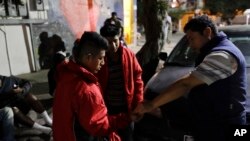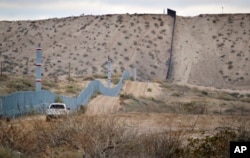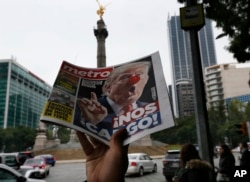U.S. federal agencies are responding to a recent surge of people migrating from Central America, apparently with the hope of reaching the U.S. before President-elect Donald Trump takes office in January.
The governments of El Salvador, Guatemala and Honduras issued a joint statement Wednesday announcing their intent to develop a cohesive plan to deal with a Trump administration on matters such as migration. The statement followed a meeting Monday in Guatemala City among the foreign ministers of El Salvador, Guatemala, Honduras and Mexico.
The U.S. Department of Homeland Security reported a sharp increase in the number of people apprehended along the southwestern border the U.S. shares with Mexico as the U.S. presidential election drew closer. The agency said 46,195 people were taken into custody in October, compared with 39,501 in September, and 37,048 in August.
U.S. Customs and Border Protection (CBP) announced November 19 it was coordinating the temporary deployment of an additional 150 agents to its Rio Grande Valley Sector in Texas "in light of recent increases in apprehensions along the southern border." It is one of nine border patrol sectors along the southwestern border of the U.S.
CBP said it also responded to the increase in border crossings by opening a temporary holding facility in the border town of Tornillo-Guadalupe, Texas. The facility can hold up to 500 people for one month.
In a statement issued earlier this month by Homeland Security Secretary Jeh Johnson, the spike has forced his agency to hold about 10,000 people more than usual.
During his campaign, Trump vowed to deport some 11 million undocumented immigrants living in the U.S. and pledged to build an "impenetrable physical wall" on the southern U.S. border. After his election win, the billionaire real estate businessman said his incoming administration would deport the estimated 2 to 3 million undocumented immigrants who have criminal records.
In an apparent response to Trump's victory and promises, Mexican Foreign Minister Claudia Ruiz Massieu issued a video detailing a plan to help Mexicans in the U.S. get information about possible changes in U.S. immigration policy.
"Stay calm," she said. "We want to inform you about possible migratory actions" that could begin taking effect early next year.
More migrants now come from Central America than Mexico, a result of rampant poverty and gang violence in El Salvador, Honduras and Mexico.












